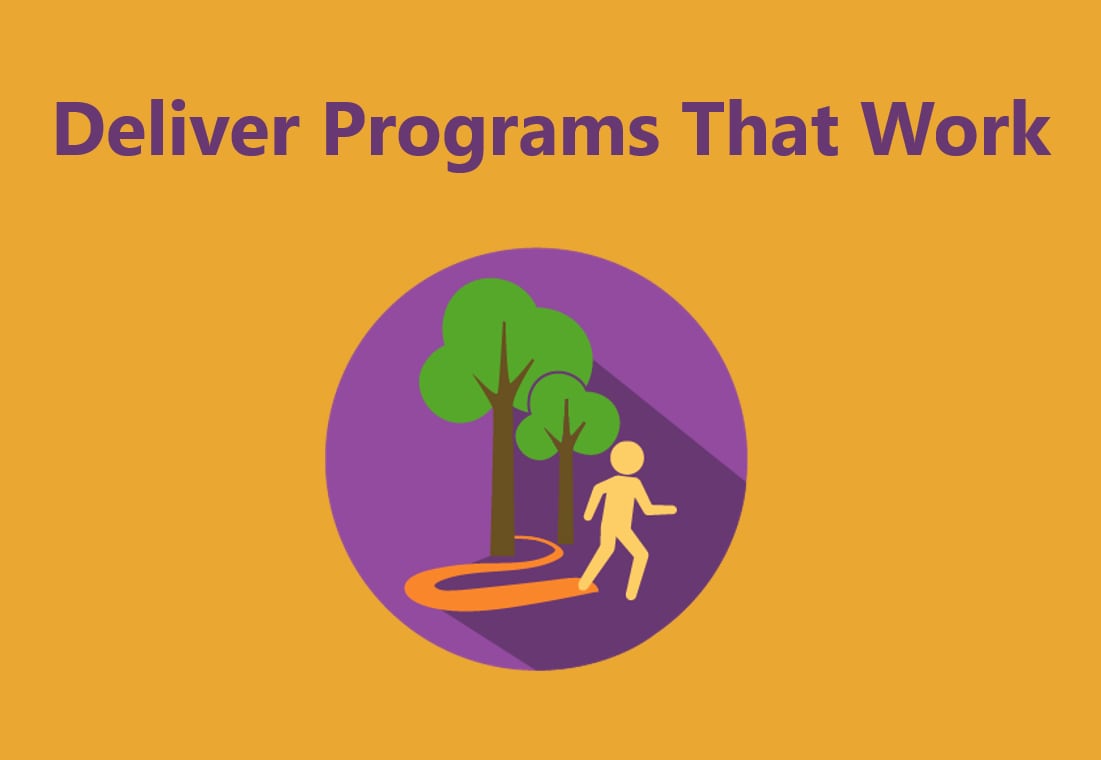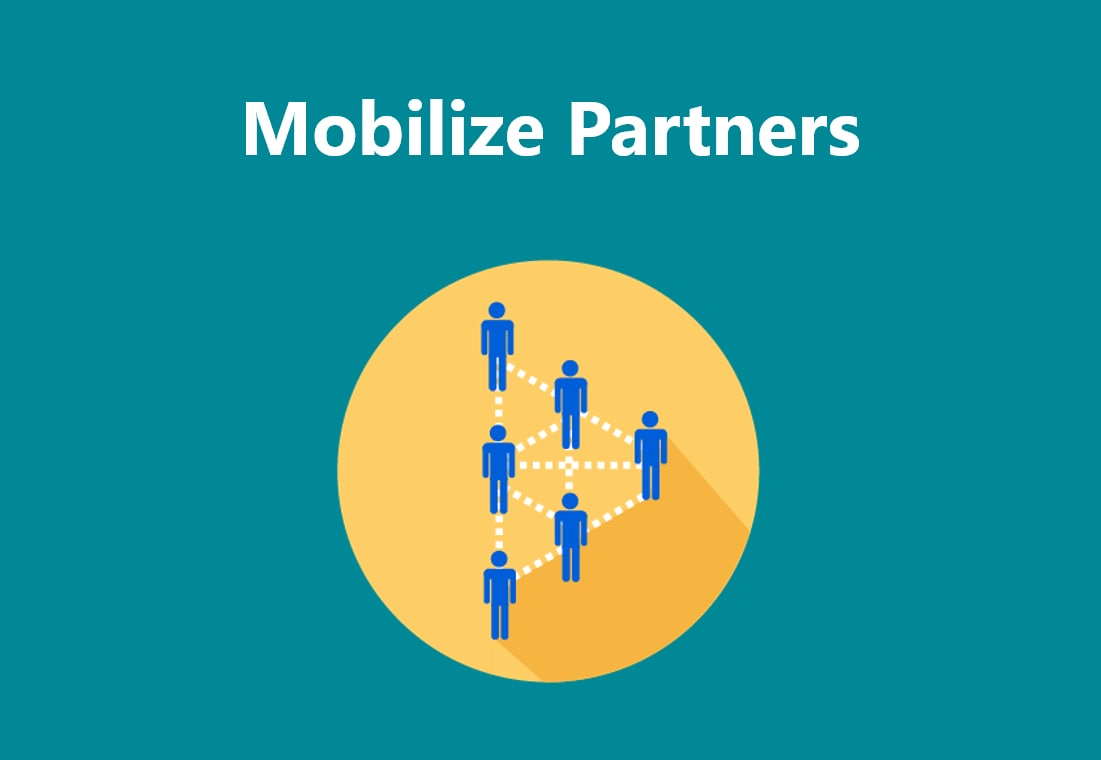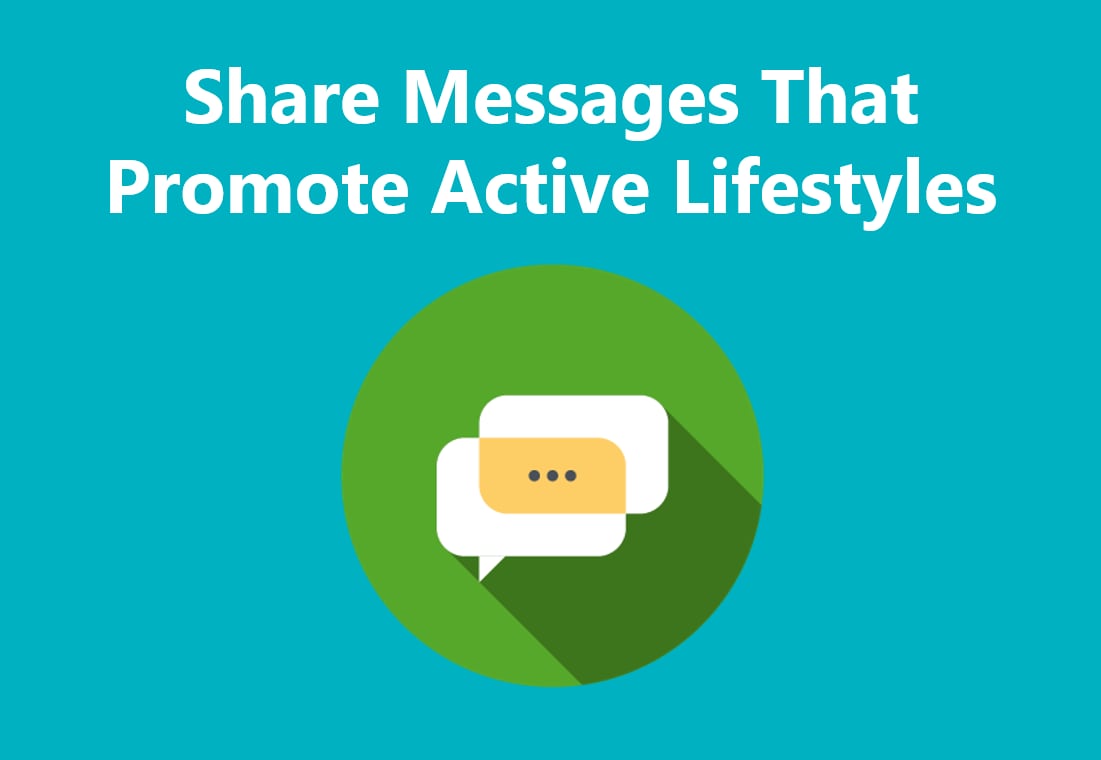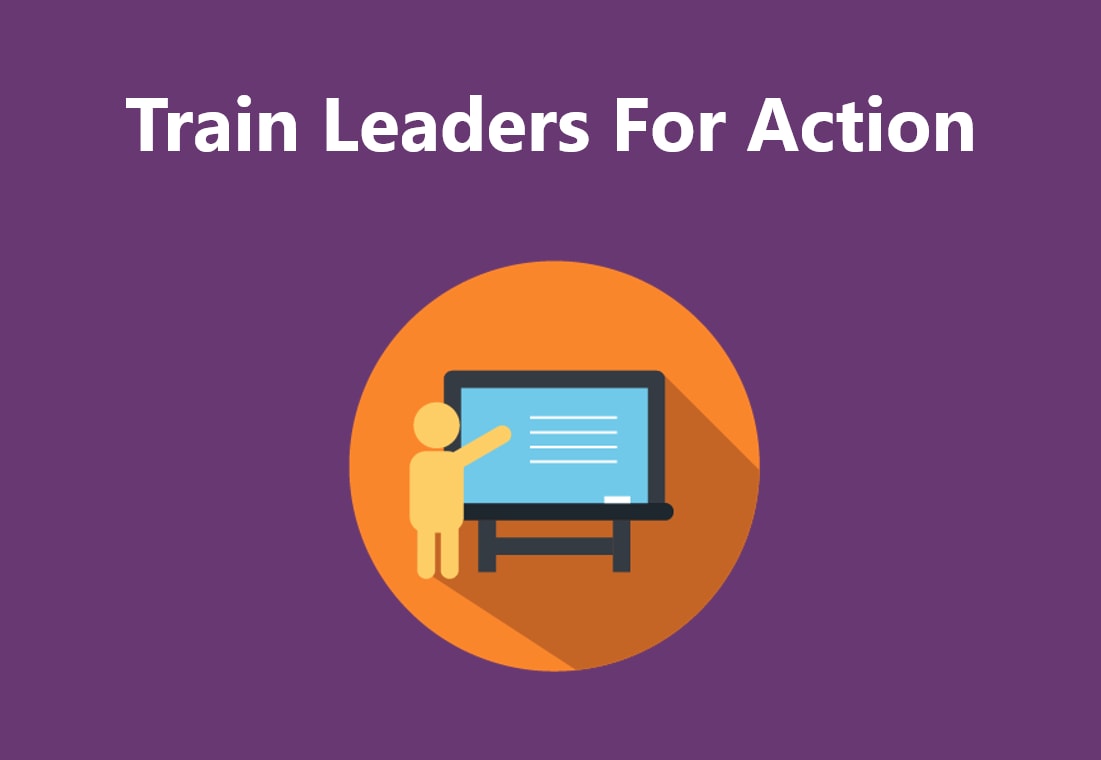Creating an Active America, Together
Creating an Active America Together
We can create an active America by working together using five action steps.
Deliver Programs That Work
Why this step matters:
This step encourages states and communities to use proven strategies to implement and scale up community programs to increase physical activity.
What CDC is doing:
CDC promotes scientifically proven strategies to increase physical activity through state and community-based programs including:
- State Physical Activity and Nutrition Program
- High Obesity Program
- Racial and Ethnic Approaches to Community Health Program
One of these proven strategies is the Community Preventive Services Task Force Recommendation for Combined Built Environment Approaches
What you can do to implement programs that work:
- Adopt combined built environment approaches to enhance opportunities for active transportation and/or leisure-time physical activity.
- Adopt zoning code reforms that promote physical activity.
- Develop shared-use agreements that allow community members to use existing community facilities such as playgrounds, gyms, or pools.
- Promote social support interventions such as walking or cycling groups that create or strengthen social networks that help people increase their physical activity.
- Create bicycle or pedestrian master plans to make bicycling, walking, wheelchair rolling, and riding transit safer, more convenient, and more realistic travel options.
- Adopt Complete Streets policies for safe and convenient access to community destinations.
- Participate in Safe Routes to Schools programs to create safe, convenient, and fun opportunities for children to bicycle and walk to and from school.
Mobilize Partners
Why this step matters:
This step leverages collective action with national, state, and local partners to ensure that physical activity initiatives are prioritized,
coordinated, and updated using research and evaluation findings.
What CDC is doing:
CDC works with a diverse group of national, physical activity partners to implement strategies for supporting and advancing high impact, innovative physical activity programs. For example, CDC works with the Y-USA to promote safe and convenient places to walk, bike, or roll through their state affiliates. CDC also partners with federal departments and agencies such as the US Department of Transportation, National Park Services, Environmental Protection Agency, and Department of Defense to integrate physical activity priorities into their work. Partners can include leaders in the following groups that support inclusive physical activity efforts:
- Business and industry
- Community, recreation, fitness, and parks
- Education
- Faith-based settings
- Healthcare
- Mass media
- Public health
- Sports
- Transportation, land Use, and community design
- Worksites
- Volunteer and nonprofit organizations
What you can do to mobilize partners:
- Coordinate efforts to increase physical activity across different settings, including early care and education, schools, worksites, hospitals, and communities.
- Participate in coalitions to improve physical activity.
- Support existing partner networks at the national, state, and local level to integrate priorities for physical activity.
Share Messages That Promote Active Lifestyles
Why this step matters:
This step encourages effective communication messages that promote physical activity and move the audience to integrate more activity into their lives. Communication messages should be geared towards populations with the highest risk of chronic diseases and offer practical strategies to add physical activity into daily routines.
What CDC is doing:
We work with our partners to share messages with specific audiences to promote physical activity by:
- Making advertisements and photos available for use through the State and Community Health Media Center.
- Creating infographics, graphic fact sheets, and one-pagers for different audiences.
- Posting social media messages on Facebook and Twitter.
What you can do to share messages that promote active lifestyles:
- Engage key audiences using social media to share messages about the benefits of active lifestyles.
- Combine a media campaign with other community-wide efforts to increase physical activity.
- Search for and use advertisements or photos from the State and Community Health Media Center for your program.
Train Leaders For Action
Why this step matters:
Local and state leaders need information about how their decisions affect physical activity. Decisions on transit, sidewalks, paths, or the locations of major destinations such as a new housing development, job center, or sports stadium can influence opportunities for active transportation. This step encourages both sector-specific and cross-sector training for leaders in transportation and planning that can enhance collaboration with public health leaders to support walkability. This diversified approach creates a shared vision on how to achieve an active community.
What CDC is doing:
We support a variety of trainings and tools to help leaders learn how to increase physical activity, including:
- America Walks’ Walking College—offers interactive, online education for walkable community advocates in public health, planning, transportation, or education professions.
- Walkability Action Institute—supports training for cross-disciplinary teams from states and metropolitan planning organizations to implement action plans for activity-friendly environments.
- Complete Streets Consortium—conducts community workshops to support Complete Streets implementation.
What you can do to train leaders for action:
- Support expansion of successful trainings in your community.
- Implement innovative, low-cost trainings for professionals across a variety of sectors.
Develop Technologies, Tools, and Data That Matter
Why this step matters:
Data helps inform decision makers on where to intervene and whether these interventions are working. This step helps to address gaps in physical activity related data.
What CDC is doing:
- Monitoring physical activity levels in adolescents and adults and assessing features that support activity-friendly communities such as sidewalks, paths, and walkable destinations.
- Exploring how best to monitor physical activity levels through wearable devices.
- Teaching computers to recognize and record features that support physical activity in communities, such as sidewalks.
What you can do to develop technologies, tools, and data that matter:
- Enhance local data collection systems for physical activity and its supportive features such as sidewalks, protected bike lanes, and walkable destinations.
- Continue to evaluate walking and walkability interventions at state and local levels.
- Explore the use of data from alternative sources such as wearable devices to gauge levels of activity and mobile devices to collect information on features of activity-friendly communities.
Physical Activity Reports
- Bicycling and Walking in the US Benchmarking Project. This project compiles data on bicycling and walking trends in the United States and releases a comprehensive report from all 50 states.
- Making Strides: State Report Cards on Support for Walking, Bicycling, and Active Kids and Communities. The State Report Cards provide a snapshot of how supportive each state is of walking, biking, and physical activity for children and adults as of 2016.
Physical Activity Implementation
- Building Healthy and Prosperous Communities: How Metro Areas Are Implementing More and Better Bicycling and Walking Projects. The Healthy Metropolitan Planning Organizations Guidebook provides planners and public health professionals key information about how to how to make it safe and convenient to bike, walk or wheelchair roll from place to place.





